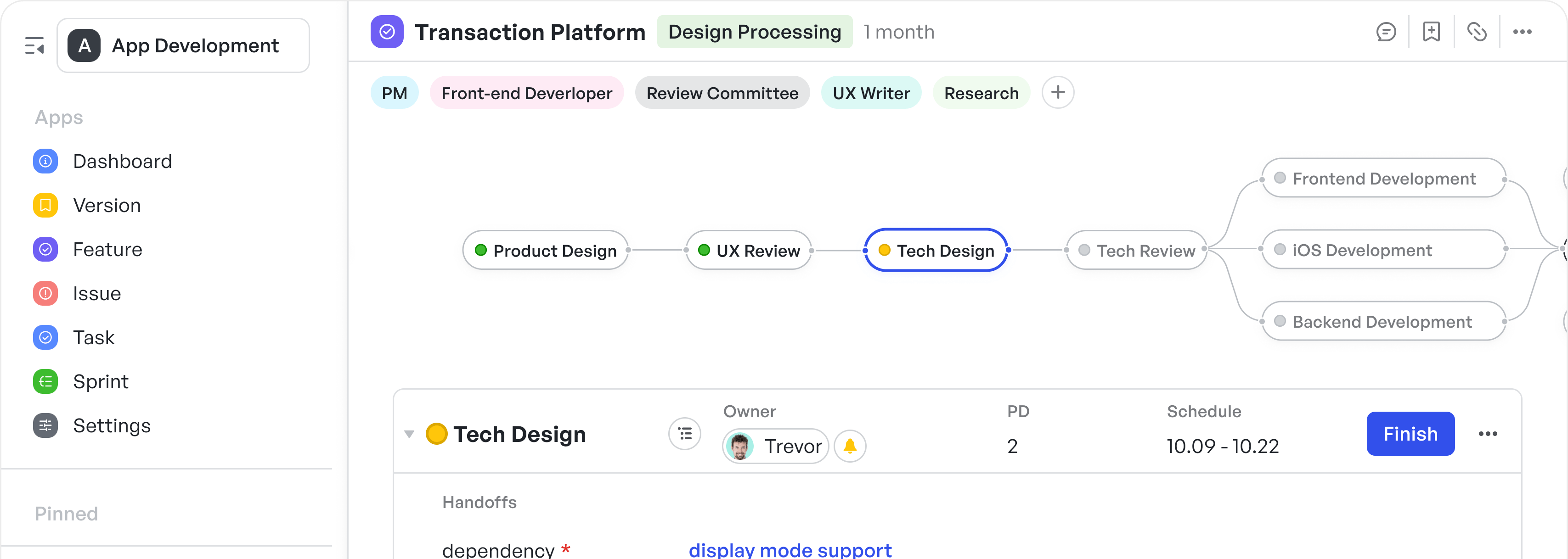How To Implement Crystal In Marketing: Enhancing Project Clarity And Team Collaboration

Marketing teams at mid-market and enterprise software companies face fast-moving projects involving multiple stakeholders, tight deadlines, and evolving priorities. Coordinating campaign planning, content creation, digital launches, and performance analysis requires a flexible yet clear project management approach.
Crystal, an Agile methodology designed around communication and adaptability, fits marketing teams’ needs by allowing workflows to be tailored to team size, project complexity, and shifting goals. It prioritizes people and interactions over rigid processes, making it ideal for managing the dynamic nature of marketing work.
This article explores how Crystal in marketing enhances project clarity and team collaboration, offering practical guidance on adopting its principles and leveraging visual workflow tools to simplify execution.
What is Crystal and Why It Matters for Marketing Teams?
Crystal is a family of Agile methodologies that values individuals and interactions over fixed processes or tools. It emphasizes frequent delivery, reflective improvement, and communication suited to the team’s size and criticality of the project.
Marketing projects often involve creative thinking, shifting priorities, and dependencies across teams such as design, content, analytics, and product. Crystal’s adaptable approach aligns well with these realities by encouraging:
- Clear roles and communication tailored to the project scope
- Incremental delivery and feedback loops
- Lightweight documentation focused on collaboration.
By focusing on people and interactions, Crystal enables marketing teams to maintain agility while managing complex campaigns and cross-functional initiatives.
Benefits of Using Crystal in Marketing Projects
Marketing leaders who apply Crystal principles gain several advantages in managing campaigns and programs:
- Improved Communication: Crystal encourages regular check-ins and open feedback, which reduces misunderstandings and misaligned expectations among marketing, sales, and product teams.
- Adaptability: The flexible process allows marketing teams to adjust priorities and workflows quickly without rigid adherence to fixed schedules or procedures.
- Transparency: Visualized workflows and defined roles provide every team member with a clear picture of project status, ongoing tasks, and deadlines.
- Faster Delivery: Incremental milestones and continuous reflection promote timely campaign launches and rapid response to market changes.
These benefits contribute to marketing operations that are responsive, aligned, and better equipped to handle the complexity typical of enterprise software companies.
How to Implement Crystal in Marketing: Practical Steps
Adopting Crystal for marketing projects involves setting up processes that focus on people, communication, and visual clarity. Here are some steps to get started:
1. Define Team Roles and Responsibilities
Begin by mapping the roles involved in your marketing projects. These may include:
- Campaign manager
- Content creator
- Designer
- Data analyst
- Product liaison
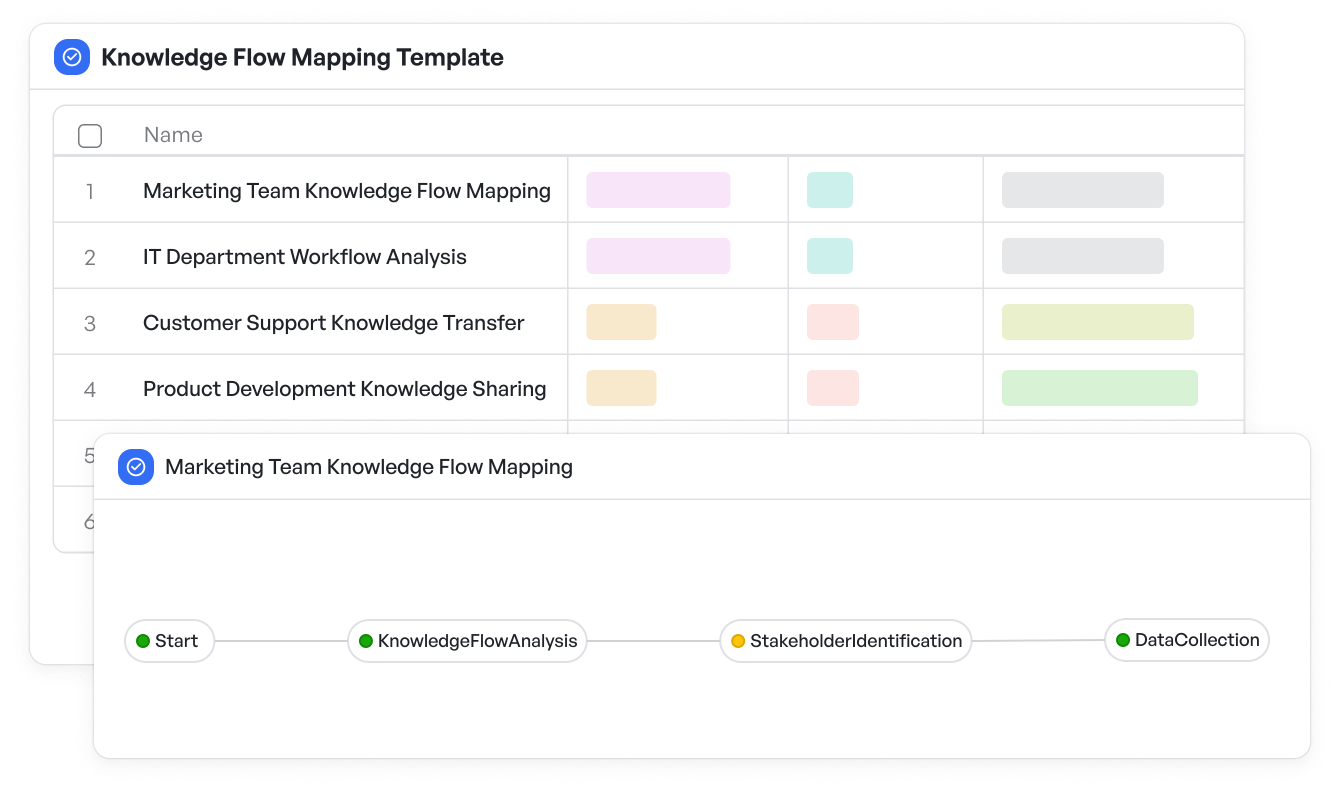 Knowledge Flow Mapping Template to help visualize team roles and communication
Knowledge Flow Mapping Template to help visualize team roles and communicationClearly outlining who is responsible for each task helps reduce overlaps and gaps. Crystal encourages role clarity suited to team size without excessive formalization.
2. Visualize Marketing Workflows
Use visual workflow tools to map out the sequence of campaign tasks from ideation to execution and analysis. Visual workflows make it easier for teams to see dependencies, progress, and who is responsible for each stage.
Suggested Read:👉7 Best Visual Project management software 2025
3. Prioritize Incremental Deliverables
Break the project into milestones (e.g., foundation, framing, finishing). Conduct reviews at each stage to gather feedback and adjust plans before moving forward. Effective milestone tracking ensures timely progress and helps catch issues early.
4. Schedule Regular Reflective Reviews
Hold brief retrospectives after key milestones or campaign phases to discuss what worked well and what could improve. Crystal highlights continuous learning as a key to sustaining agility.
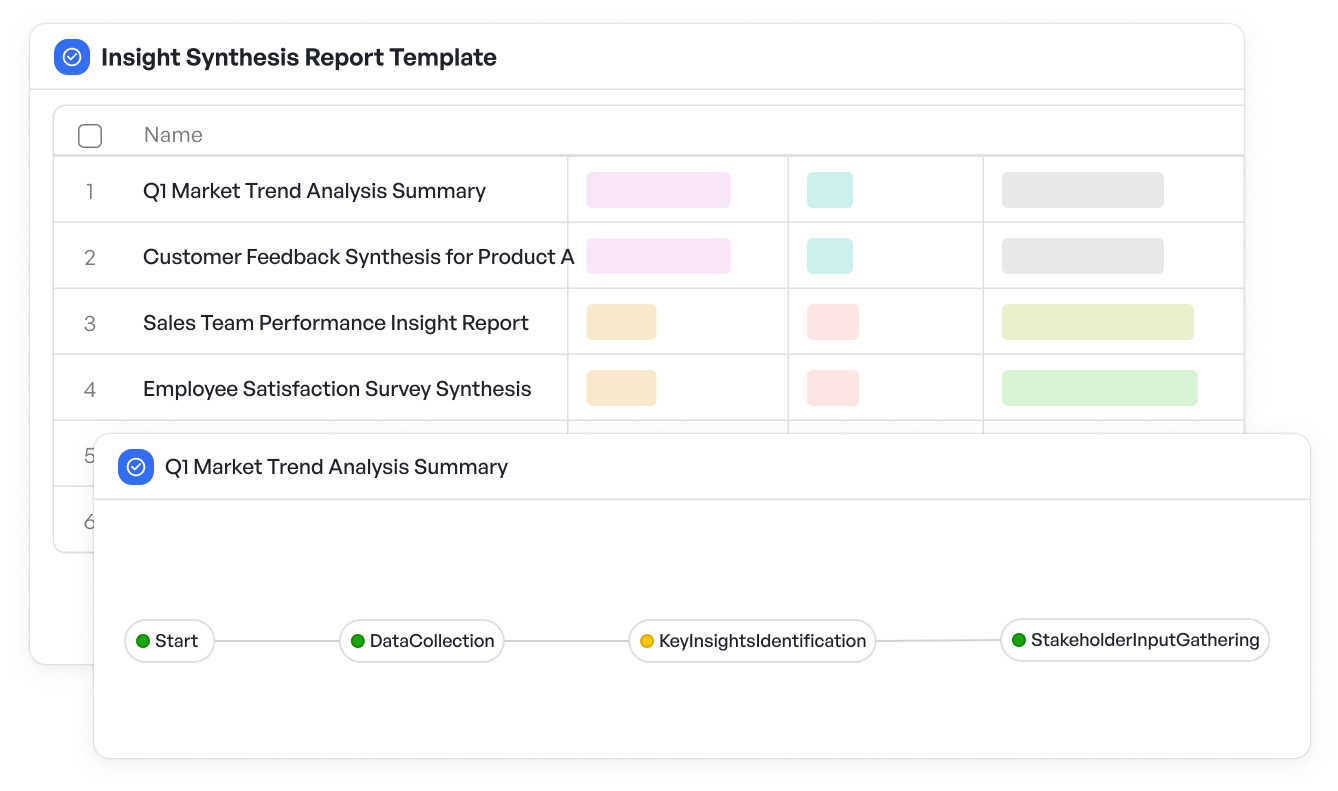 Insight synthesis report template to capture feedback and improve future marketing campaigns
Insight synthesis report template to capture feedback and improve future marketing campaigns5. Adapt Communication Cadence
Set a communication rhythm that fits the team’s size and project pace—daily stand-ups may suit some teams while weekly reviews might work better for others. The goal is to keep everyone aligned without overwhelming meetings.
You might also like:👉The Future of Team Collaboration and Communication with AI
Leveraging Visual Workflow Templates to Support Crystal in Marketing
One challenge marketing teams face is balancing flexibility with the need for clear processes and accountability. Visual workflow tools offer an effective solution by combining structure with adaptability.
Visual workflows show the entire campaign lifecycle on a single interface, making it easy to track progress, deadlines, and collaboration points. They enable marketing managers and team members to:
- Understand the full project scope at a glance
- Identify bottlenecks or task delays early
- Collaborate directly within workflow stages
- Customize workflows for different campaign types
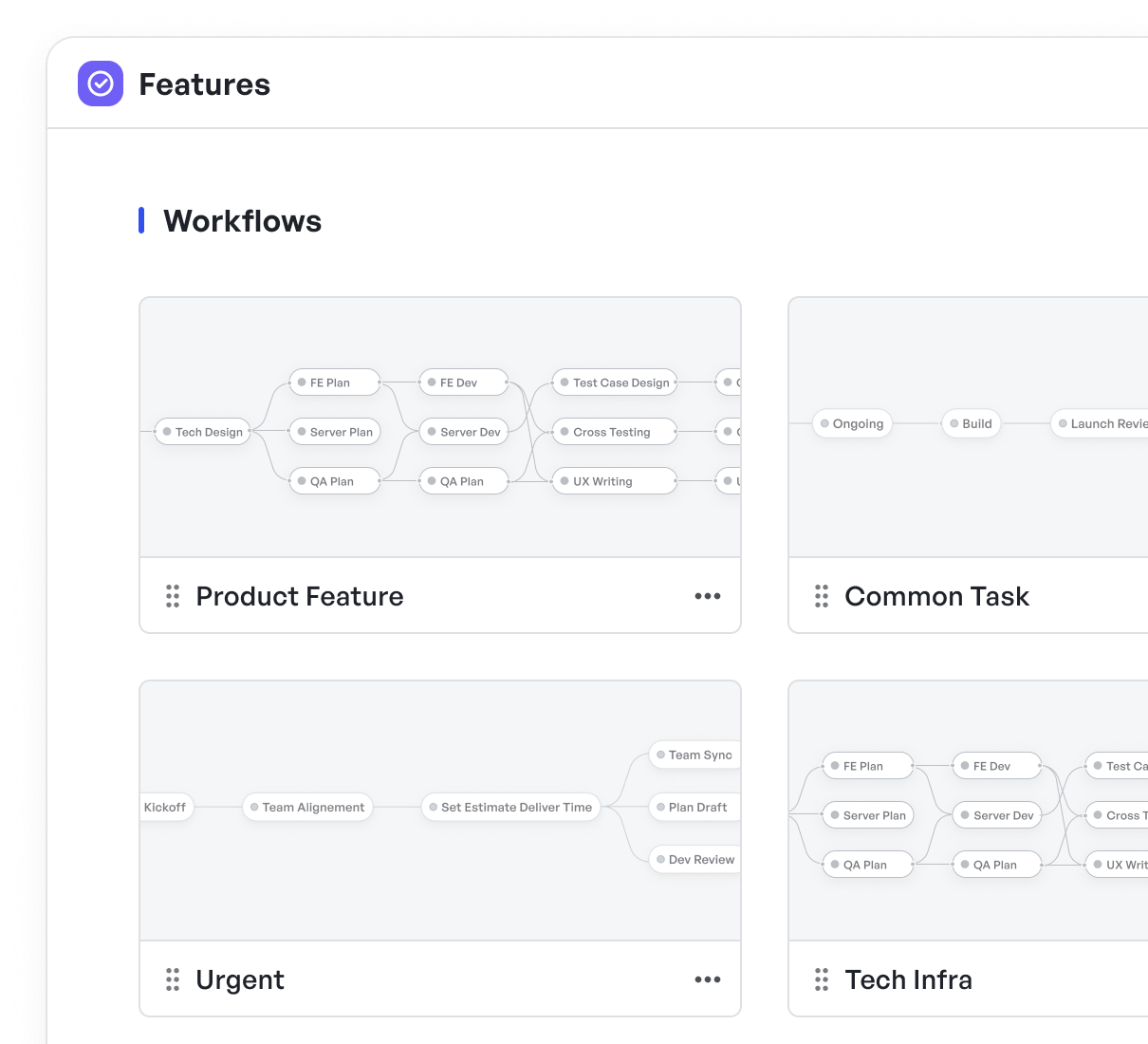 Visualization workflows in Meegle
Visualization workflows in MeegleMeegle’s marketing templates provide a ready-made foundation for teams adopting Crystal principles. These templates focus on campaign planning, content review cycles, and delivery tracking with visual clarity. Their flexibility supports both simple and complex marketing projects without unnecessary overhead.
Overcoming Common Challenges in Crystal Adoption for Marketing
While Crystal offers many benefits, marketing teams may face obstacles such as:
- Resistance to change from team members used to traditional project management
- Balancing creativity with structured workflows
- Ensuring consistent communication across remote or cross-functional teams
Addressing these challenges requires leadership buy-in, clear communication of benefits, and training on using visual workflow tools effectively. Pilot runs with smaller campaigns can build confidence and demonstrate quick wins.
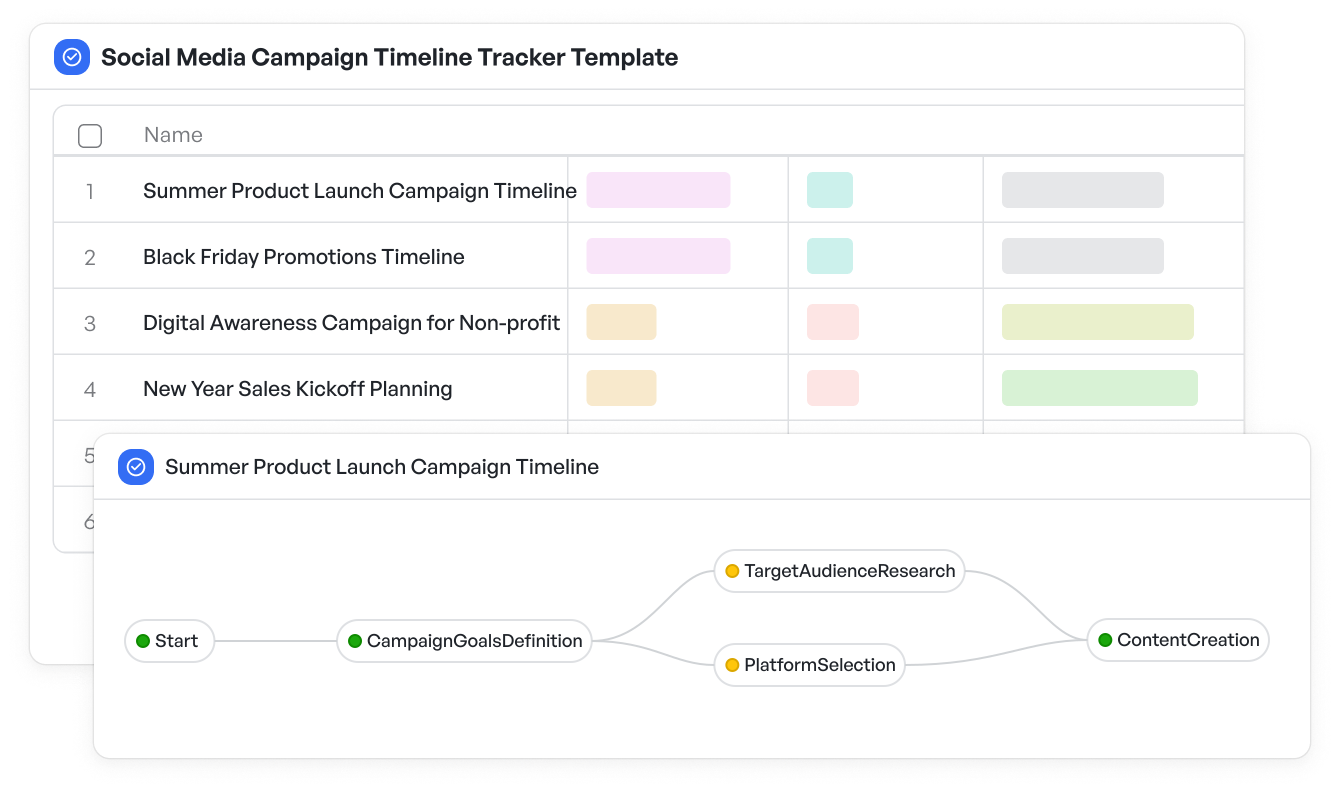 Social media campaign timeline tracker to run pilot campaigns
Social media campaign timeline tracker to run pilot campaignsClearer Marketing Project Management with Crystal
Adopting Crystal in marketing empowers teams to manage complex projects with clarity and flexibility. By focusing on communication, incremental delivery, and visual workflows, marketing leaders can foster collaboration, accelerate campaign execution, and adapt quickly to shifting priorities.
Visual tools designed for Crystal workflows help teams stay aligned, reduce confusion, and maintain momentum even in fast-paced enterprise software environments.
From brief to launch—Meegle applies crystal principles to every step of your marketing flow.
The world’s #1 visualized project management tool
Powered by the next gen visual workflow engineRead More
Check All BlogsStart creating impactful work today
